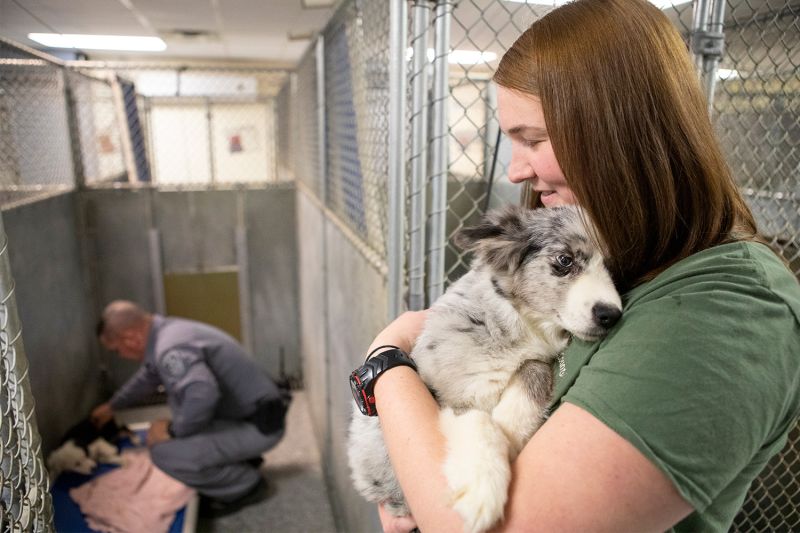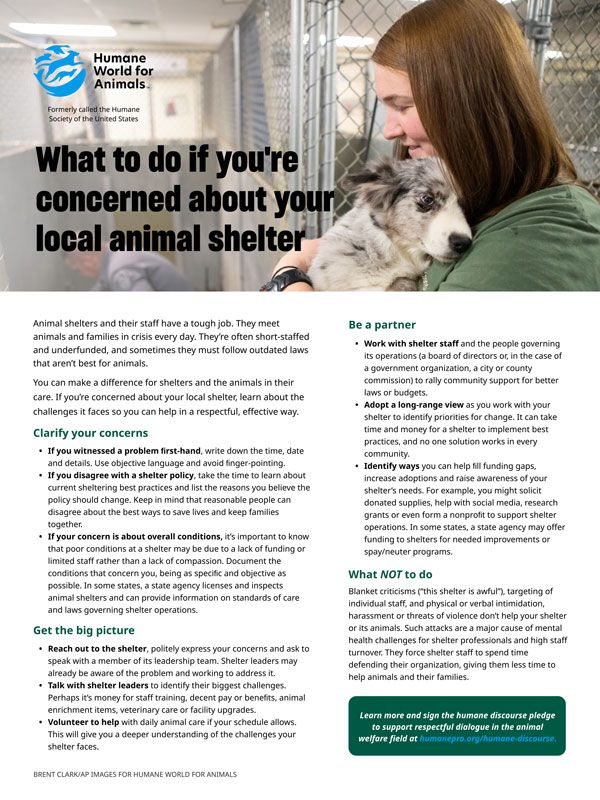What to do if you’re concerned about your local animal shelter
You can make a difference for shelters and the animals in their care

Animal shelters and their staff have a tough job. They meet animals and families in crisis every day. They’re often short-staffed and underfunded, and sometimes they must follow outdated laws that aren’t best for animals.
If you’re concerned about your local shelter, learn about the challenges it faces so you can help in a respectful, effective way.
- Clarify your concerns
- If you witnessed a problem first-hand, write down the time, date and details. Use objective language and avoid finger-pointing.
- If you disagree with a shelter policy, take the time to learn about current sheltering best practices and list the reasons you believe the policy should change. Keep in mind that reasonable people can disagree about the best ways to save lives and keep families together.
- If your concern is about overall conditions, it’s important to know that poor conditions at a shelter may be due to a lack of funding or limited staff rather than a lack of compassion. Document the conditions that concern you, being as specific and objective as possible. In some states, a state agency licenses and inspects animal shelters and can provide information on standards of care and laws governing shelter operations.
- Get the big picture
- Reach out to the shelter, politely express your concerns and ask to speak with a member of its leadership team. Shelter leaders may already be aware of the problem and working to address it.
- Talk with shelter leaders to identify their biggest challenges. Perhaps it’s money for staff training, decent pay or benefits, animal enrichment items, veterinary care or facility upgrades.
- Volunteer to help with daily animal care if your schedule allows. This will give you a deeper understanding of the challenges your shelter faces.
- Be a partner
- Work with shelter staff and the people governing its operations (a board of directors or, in the case of a government organization, a city or county commission) to rally community support for better laws or budgets.
- Adopt a long-range view as you work with your shelter to identify priorities for change. It can take time and money for a shelter to implement best practices, and no one solution works in every community.
- Identify ways you can help fill funding gaps, increase adoptions and raise awareness of your shelter’s needs. For example, you might solicit donated supplies, help with social media, research grants or even form a nonprofit to support shelter operations. In some states, a state agency may offer funding to shelters for needed improvements or spay/neuter programs.
What NOT to do
Blanket criticisms (“this shelter is awful”), targeting of individual staff, and physical or verbal intimidation, harassment or threats of violence don’t help your shelter or its animals. These attacks are a major cause of mental health challenges for shelter professionals and high staff turnover. They force shelter staff to spend time defending their organization, giving them less time to help animals and their families.
Document







